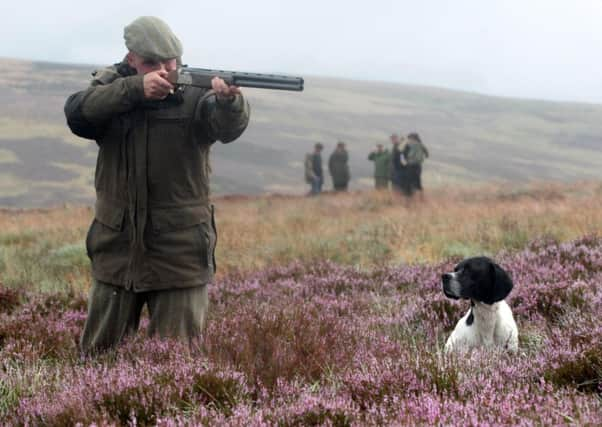Moorland mismanagement theories dismissed by experts


Around a dozen protestors armed with mops and buckets made their feelings known during a visit to Natural England’s head office in Sheffield yesterday.
The group say they are outraged that millions of pounds of public money is awarded to grouse moor owners in environmental stewardship payments when they practice burning of blanket bog and are concerned about the affects on flooding in the Hebden Bridge area.
Advertisement
Hide AdAdvertisement
Hide AdBut Natural England told the Yorkshire Post that strict rules were in place to manage burning and the Moorland Association said there was no evidence linking burning to flooding, while the severity of burning is not such that the ground is left barren.
Jim Peterken, a ‘Ban The Burn’ supporter, said: “The general public may be interested in the issue that our hard-earned public tax money is being paid to rich landowners to flood us.
“Grouse moor owners are being paid millions of pounds through the environmental stewardship scheme, to protect the uplands. But they are burning blanket bog and making flooding worse in areas like Hebden Bridge. Not to mention destroying biodiversity.”
Rejecting those assertions, Amanda Anderson, director of the Moorland Association, said: “Grouse moor managers are playing a big part in peatland ‘re-wetting’, that is blocking up old drainage ditches dug under an ill-advised Government incentive to try and make the moorlands vegetation better for sheep grazing.
Advertisement
Hide AdAdvertisement
Hide Ad“It is hoped that this will raise the water table and slow the heather growth reducing the need to manage the heather by burning over time.”
Controlled burning also wards against outbreaks of wildfires and creates better protection for bird species, she said.
“Best practice cool burns do not leave the ground bare and are essential to protect against wildfires whilst also providing food for sheep and grouse and the patchwork mosaic that results provides habitat for many threatened waders.
“There is no evidence to link burning with flooding. The Moorland Association has every sympathy with those flooded, but what can be done in the hills to alleviate the problem is being done, but it will not stop rain water running down hill when it just pours and pours and the ground is saturated.”
Advertisement
Hide AdAdvertisement
Hide AdBut Ban The Burn members handed over a letter to Natural England yesterday calling for urgent action to reduce run-off from the uplands and calling for burning on blanket bog to be banned completely.
Natural England said agreed limits to management activities, such as burning, had been in place on the Walshaw Estate above Hebden Bridge since March 2012.
A spokesperson said: “Burning will not be permitted in areas where heather amounts to less than 50 per cent of the vegetation cover and will not be permitted in most of the areas defined as sensitive by the Heather and Grass Burning Code 2007 – this includes areas of blanket bog.
“In the areas where it has been agreed that burning can take place, limits have been set regarding the length of the burning rotation.”